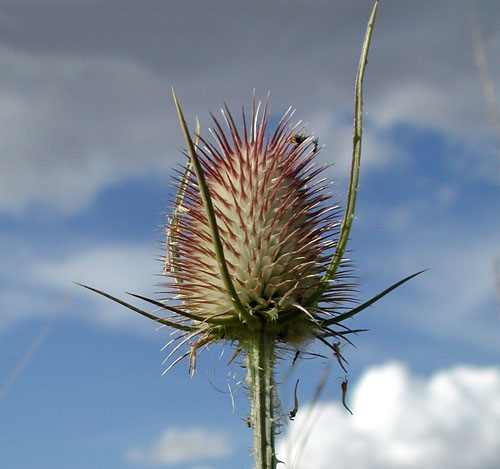
FLOWER OF THE MONTH - AUGUST 2009
(Home)
COMMON TEASEL (Dipsacus fullonum)

This tall biennial or perennial plant – up to 6 feet in height – is fairly commonly found in rough grassy places or damp areas such as ditches. The stems and leaves are prickly; the basal leaves in a rosette which withers away before the flowers develop, are covered in “goose pimples”. The pale purple flowers, in July or August, form a conical spiny head. The dead stems and flowerheads persist throughout the winter, and are a popular component of dried flower arrangements.
The name teasel arises from the age-old use of the spiny heads to “tease” out woollen fibres before spinning – a process known as carding – or to raise the nap of cloth. In the course of time, in most mills, teasels were replaced by steel brushes, but they are still used in cases where an exceptionally fine pile is needed, such as the baize on billiard tables. The teasel most often used in the woollen industry was the fuller’s teasel (D. sativus), with shorter and stiffer spines than the common plant.
The large paired leaves hug the stem and form a sort of cup in which rain-water gathers. This water stays there for a considerable time, helping to keep the plant growing even in the driest weather. Such water or “dew” has long been believed to have rejuvenating powers and to benefit the complexion. Even nowadays it is sometimes used to bathe and relieve itchy eyes.
Text by George Metcalfe. Photos by Colin Wootton.